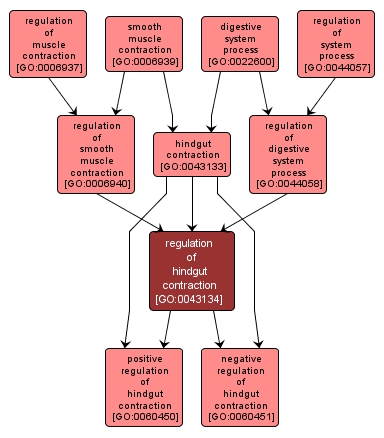GO TERM SUMMARY
|
| Name: |
regulation of hindgut contraction |
| Acc: |
GO:0043134 |
| Aspect: |
Biological Process |
| Desc: |
Any process that modulates the frequency, rate or extent of muscle contraction of the hindgut, the posterior part of the alimentary canal, including the rectum, and the large intestine. |
|

|
INTERACTIVE GO GRAPH
|














